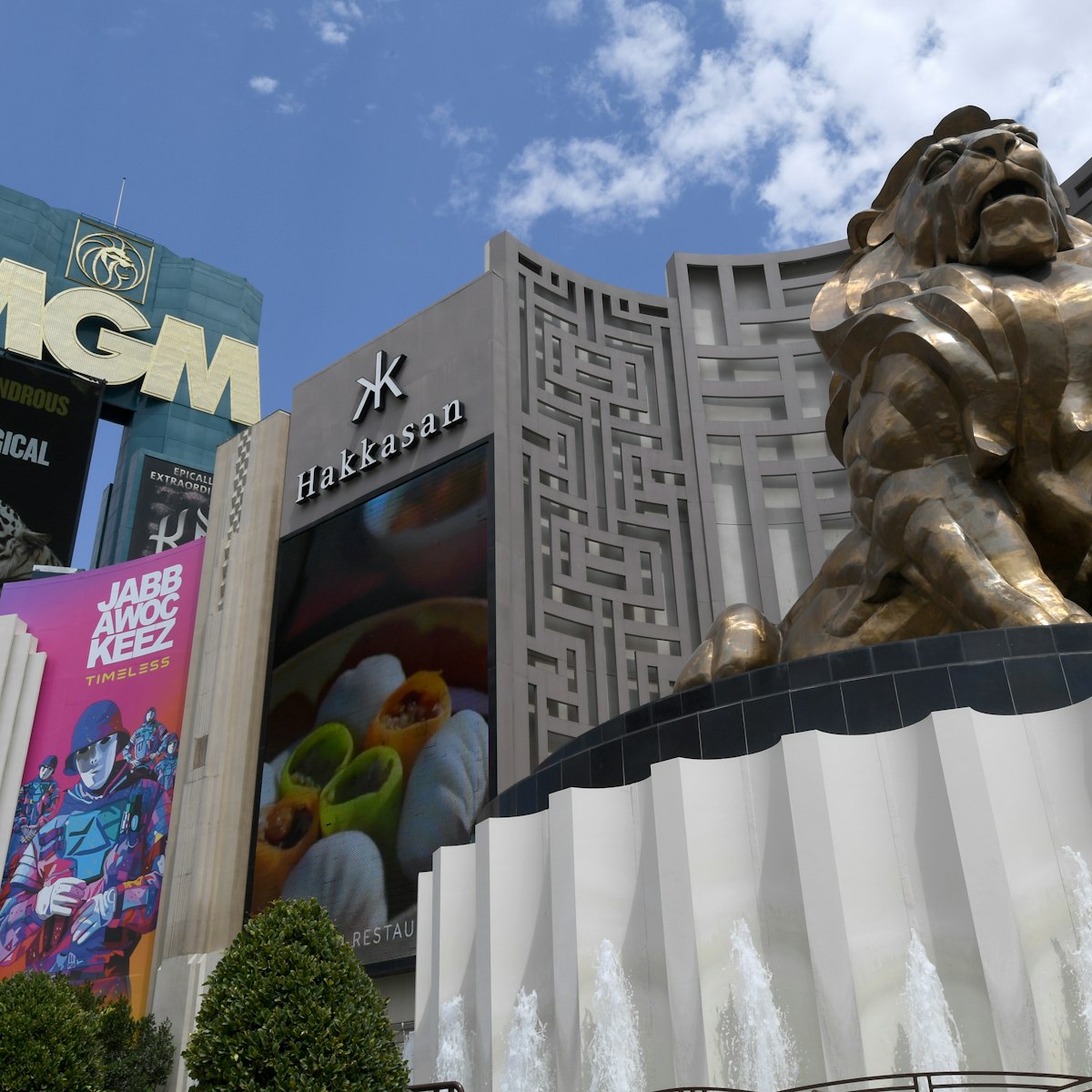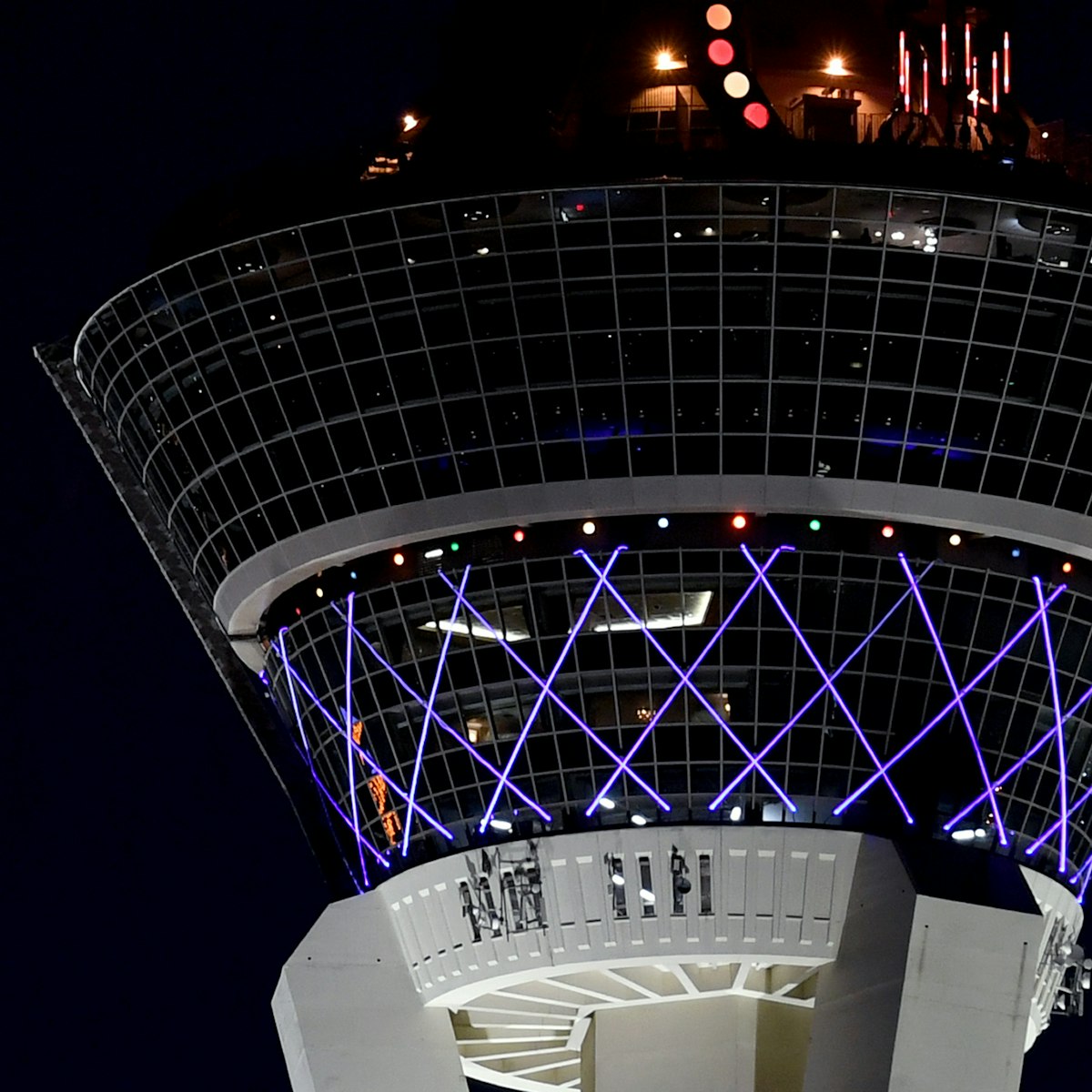Named after Egypt's splendid ancient city, the landmark Luxor once had the biggest wow factor on the south Strip. While the theme easily could have produced a pyramid of gaudiness, instead it resulted in a relatively refined shrine to Egyptian art, architecture and antiquities. Luxor's casino floor has a slightly frenetic feel and confusing layout, with a few thousand slots, more than 100 gaming tables, and a race and sports book.
Built in 1993, the 30-story pyramid, housing an enormous atrium and cloaked in black glass, is the main focus. The atrium – the world's largest when it opened – is so voluminous it could accommodate nine Boeing 747s stacked on top of one another. At the apex of the pyramid, a 40-billion-candlepower beacon, the world's most powerful, sends a shaft of bluish-white light 10 miles into the sky, where it's said to be visible to astronauts…and whomever/whatever else hovers about above the great beacon of Las Vegas.
Out in front of the pyramid is a 10-story crouching sphinx and a sandstone obelisk etched with hieroglyphics. The pyramid's interior is adorned with huge Egyptian statues of guards, lions and rams; sandstone walls with hieroglyphic-inscribed tapestries and grand columns; a towering replica of the Great Temple of Ramses II; and a pharaoh's treasure of polished marble.
The King Tut Museum and many of the faux-Egyptian novelties are gone now that MGM Resorts has made over the Luxor with a sleeker, more updated image. Slick-looking restaurants such as T&T (Tacos & Tequila) and Rice & Company, and rowdy comedian Carrot Top bring in a younger crowd.








